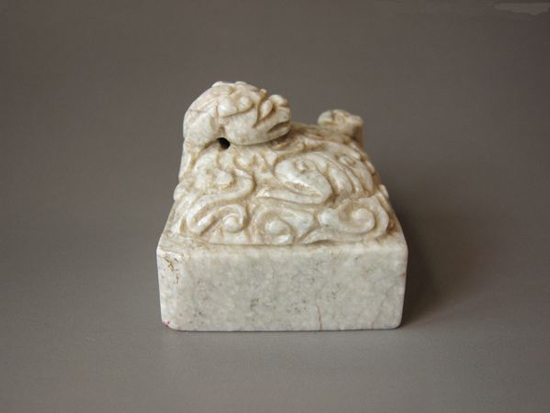China began to produce jade articles from primitive societies. With the development of social productive forces, it gradually formed independent professions, mostly focusing on jealousy and capitalism. From Song to Qing, Suzhou became a national jade center. The royal courts of the past dynasties all have jade workshops for production. Due to the high hardness of jade, special tools and methods are needed for processing. Therefore, there are several processes such as selecting materials, drawing samples, sawing materials, making blanks, drilling, making fine, light jade, and engraving. Antique jade also needs to increase the process of "disability" and "burning ancient". The slave society is dominated by bronze tools. The feudal society gradually changed from bronze tools to steel tools. Quartz sand hardness is higher than jade, so it has been used for grinding jade since ancient times, also known as "solution jade sand". When the toothless saw is pushed and pulled forward or backward, and the drill is rotated and contacted with the jade material, the quartz sand mixed with water is placed and honed into the device as the tool moves. The shape and pattern of the jade are made by this method. Therefore, the pre-Qin called the jade jade, the Song people called the jade, today called the grind, to show that it is different from the engraving process.

The historical evolution of Chinese jade art style
In the south of China, the large jade of Liangzhu culture and the multi-section jade of different heights indicate that the jade process has begun to separate from the stone craft. The jade shape is more complicated, and it has been able to grind the yin line, the Yang line, the flat convex, the hidden geometric shape and the animal-shaped pattern decoration, and has a simple and childish style. The jade articles of the Shang and Zhou Dynasties are characterized by simple image and demeanor. They are characterized by the decorative details of the Yang line hidden by the double hooks, and there is a pretty jade. During the Spring and Autumn Period and the Warring States Period, the jade crafts had developed extensively, and the various vassal states competed and refined. Compared with the finely carved spring and autumn warring States jade carvings, the Qin and Han jade wares tend to be bold and unconstrained in artistic style. The Hanyu hidden place is often used as a fine-grained Yinxian carving. It is as strong as a silky painting on an ancient painting to make up for its weak point of three-dimensionality. This is a feature of the Chinese jade technique, which has a profound impact on the later jade. Tang and Song jade are colored like sheep fat, shiny and crystal, with excellent texture and exquisite technique. The theme of the animal and animal flowers and the exquisite and clearing device increase, the realism ability is greatly improved, and the tendency of secularization begins to appear. High rumors. This is closely related to the maturity of painting and sculpture art at that time.
The universal development of jade articles in the north and south of the Yuan, Ming and Qing Dynasties was an extremely glorious era in the history of Chinese jade. The existing Yuhai Da Yuhai in the Yuanhai Group, the jade belt plate unearthed from the tomb of Ming Wang Xingzu, the Yugui, jade belt hook, jade bowl, jade bowl, jade pot, Yujue, jade, etc. unearthed from the tomb of Zhu Xi can represent the jade articles of this period. Features. While inheriting the characteristics of the jade in the Song Dynasty, there are two mutually exclusive tendencies of extensive processing or cumbersome processing. The Yuan Ming jade is also influenced by the literati paintings and calligraphy. It has developed jade wares of literary poetry and freehand landscape paintings. It also often engraves famous literary talents and pursues the elegant taste of literati. During the Qianlong period of the Qing Dynasty, the jade was rich in jade, royal propaganda and social needs, and the maturity of technology reached an unprecedented peak. In addition, the Chinese Uygur's jade craftsmanship is rich in local color and is an integral part of the Chinese national jade art treasure. Under the influence of the post-feudal society's antique thoughts, the jade articles produced with the aim of "returning to the simple" and pursuing the "Hanyu" style are called antique jade. This jade began in the Song and Qing dynasty and has its own special The aesthetic value is also an integral part of ancient jade.
Hengshui Dahan Textiles Co.,Ltd. , https://www.dh-towel.com